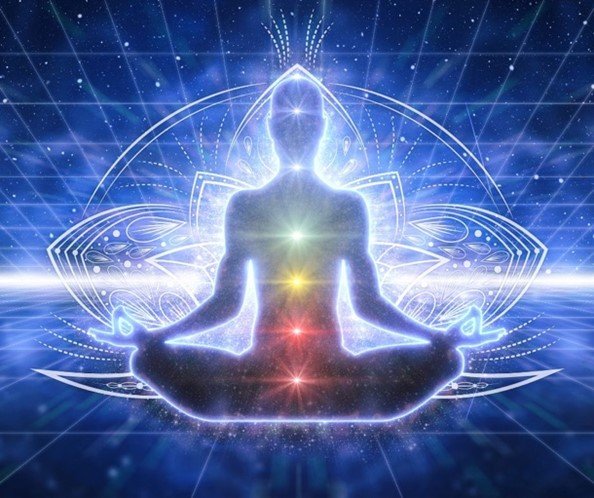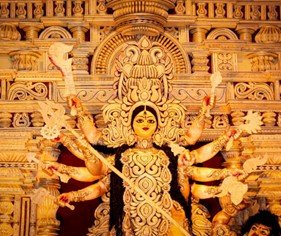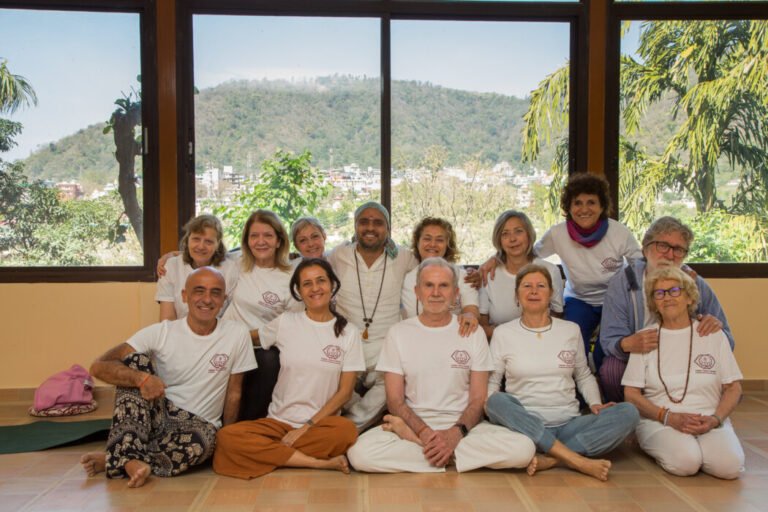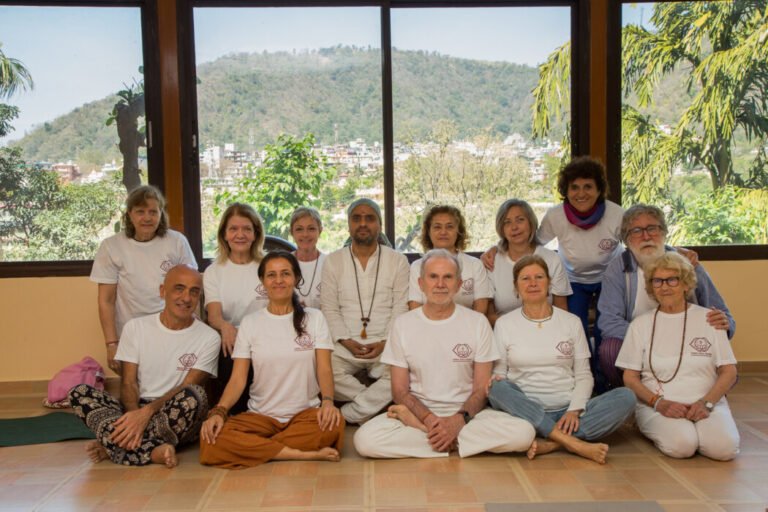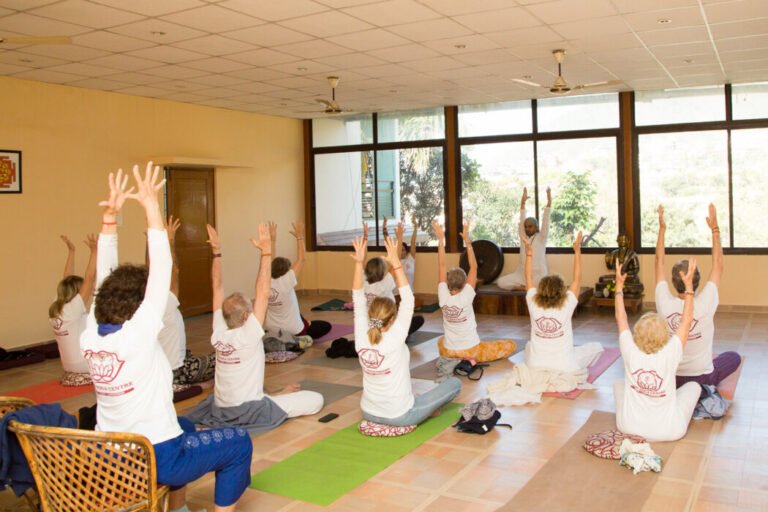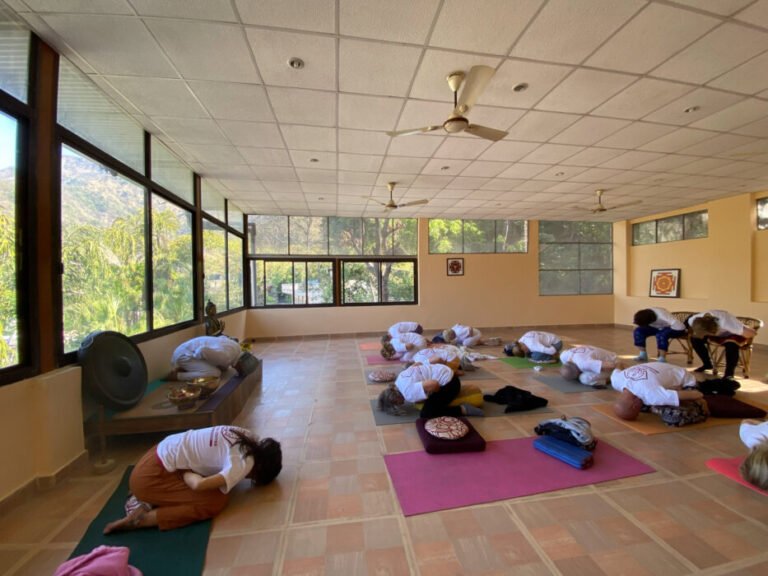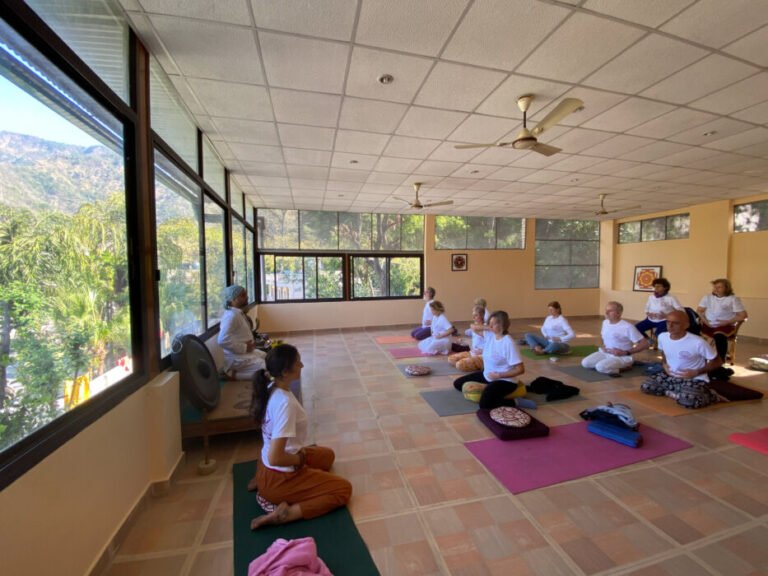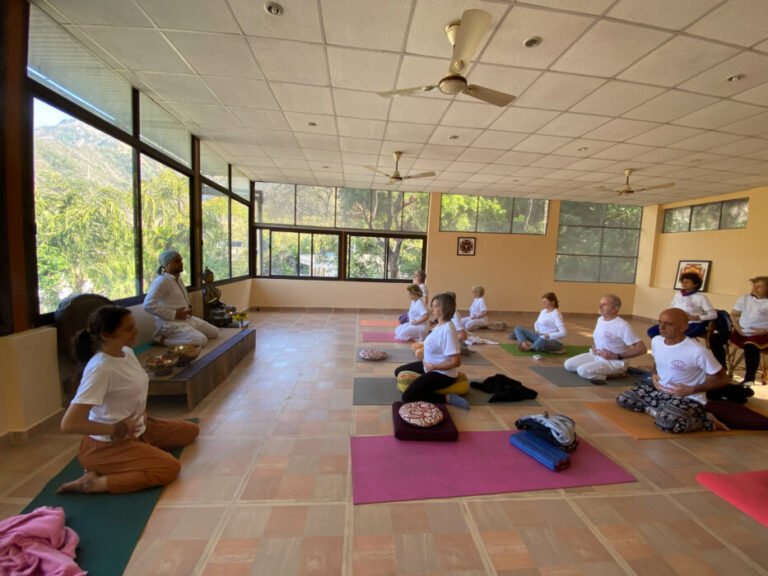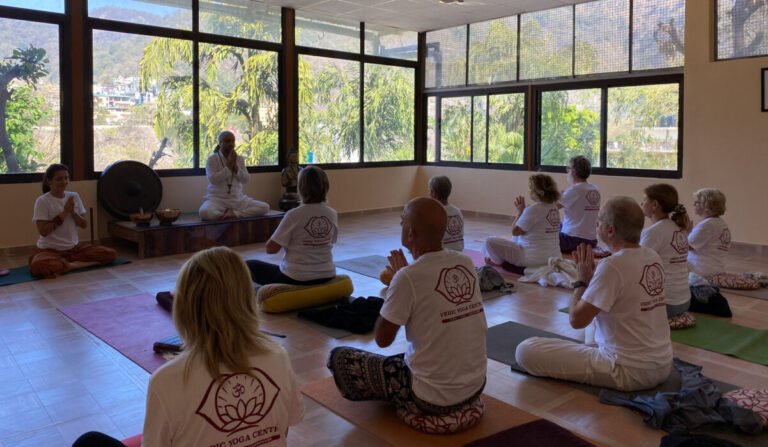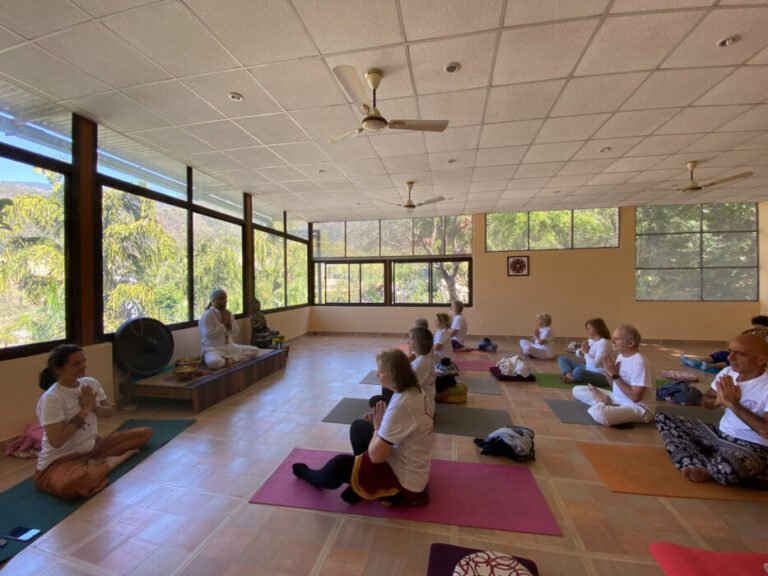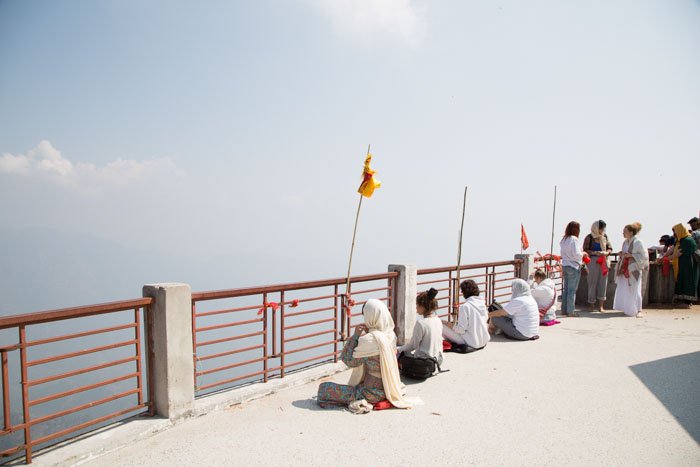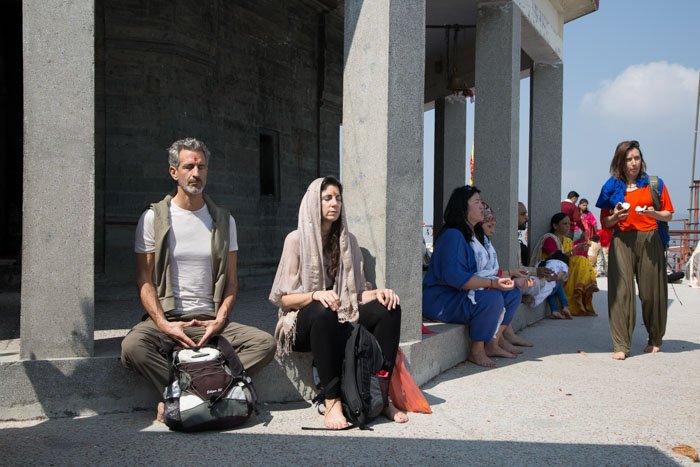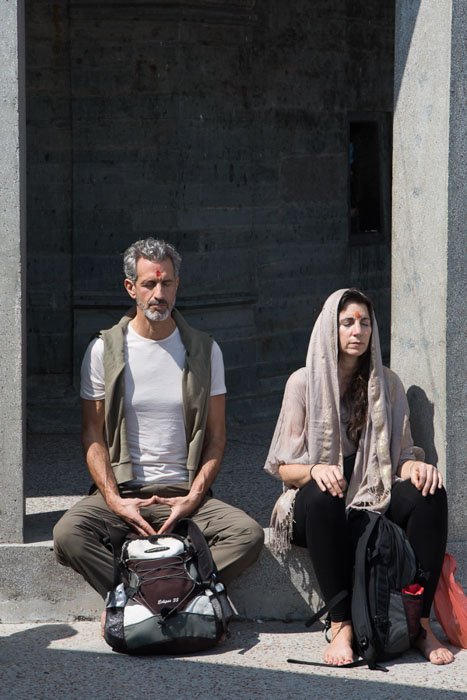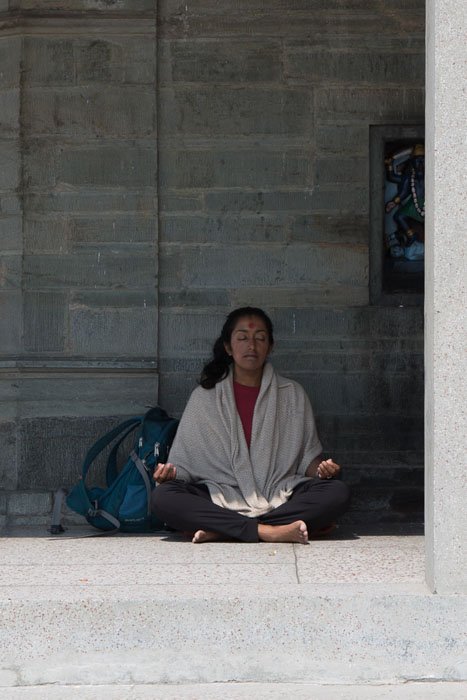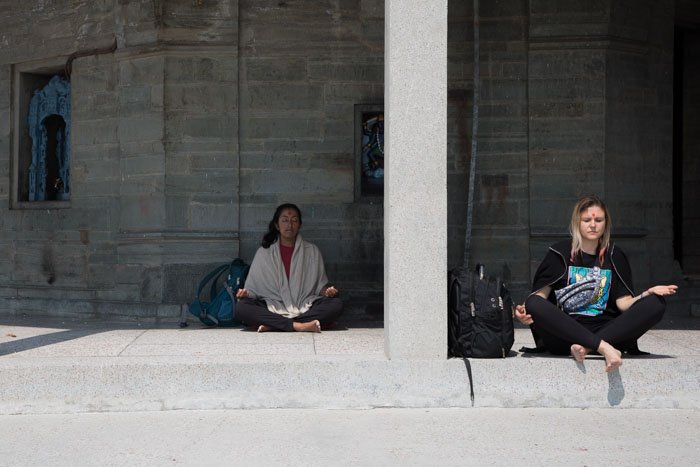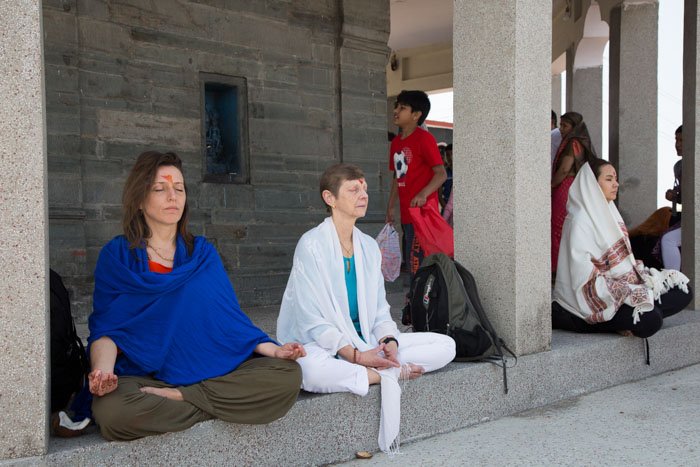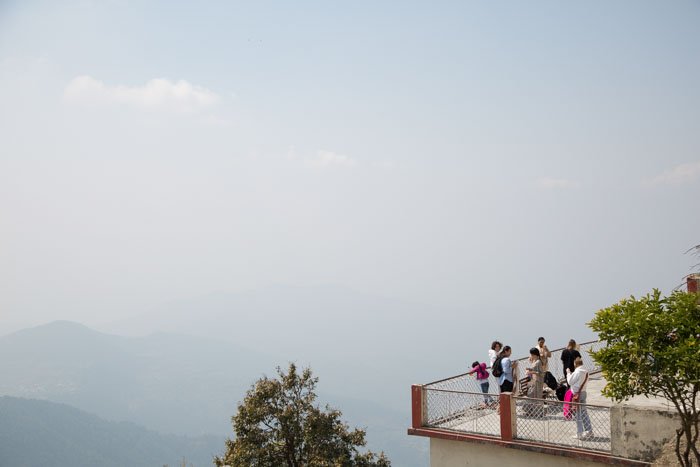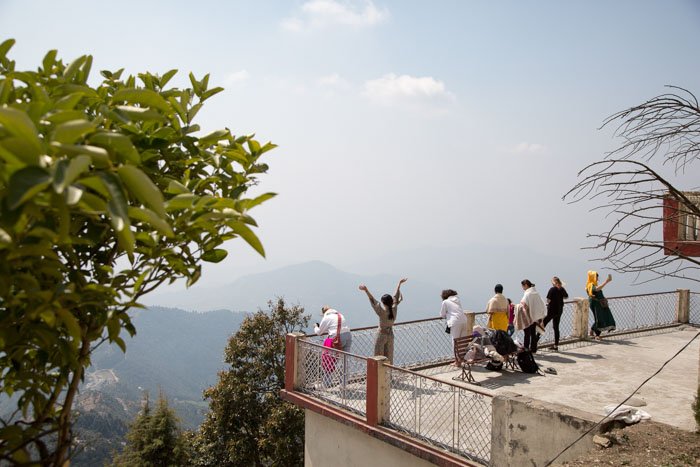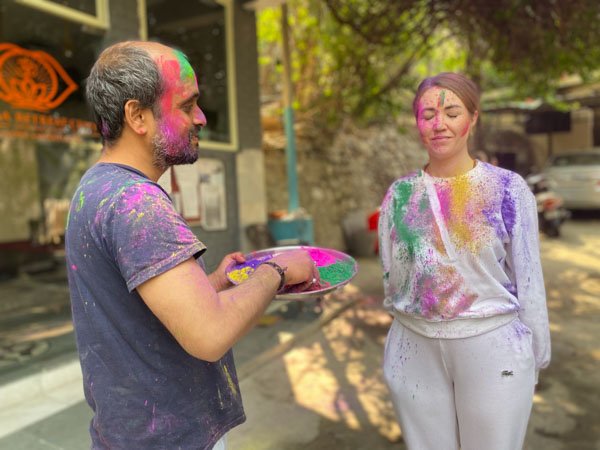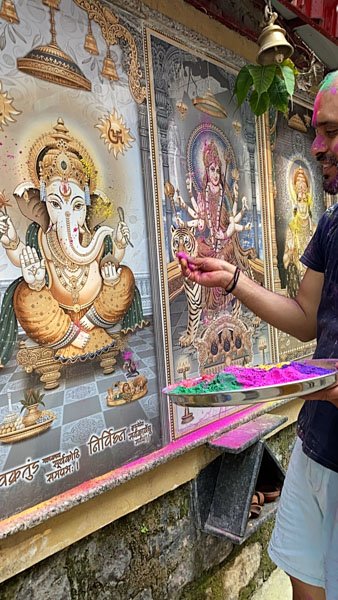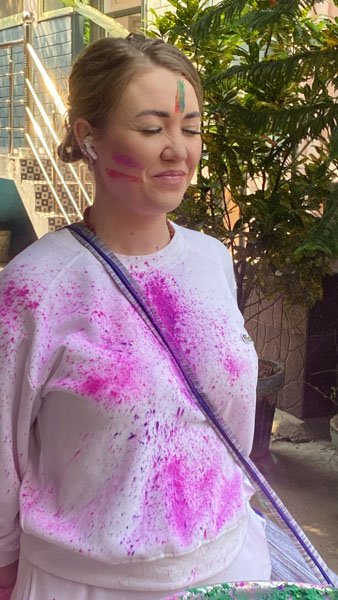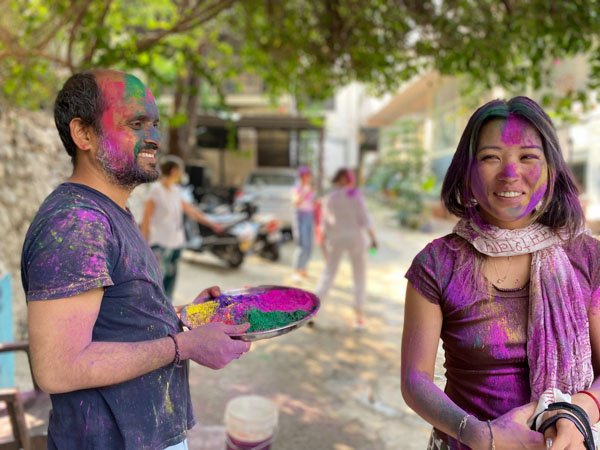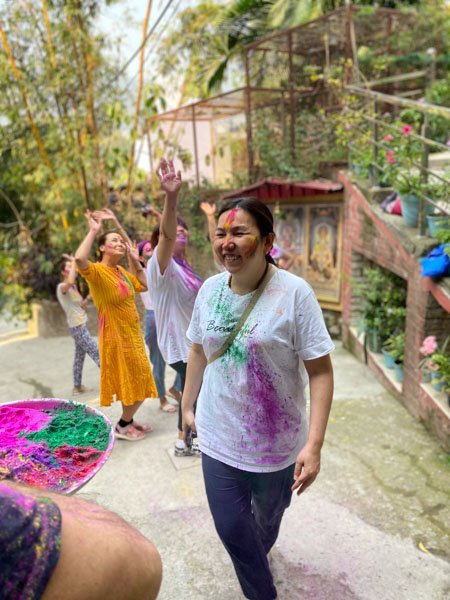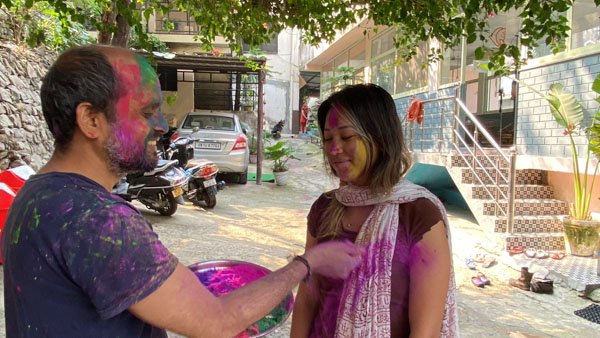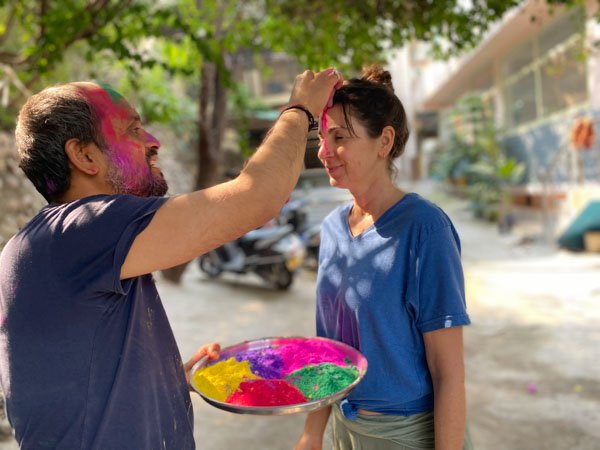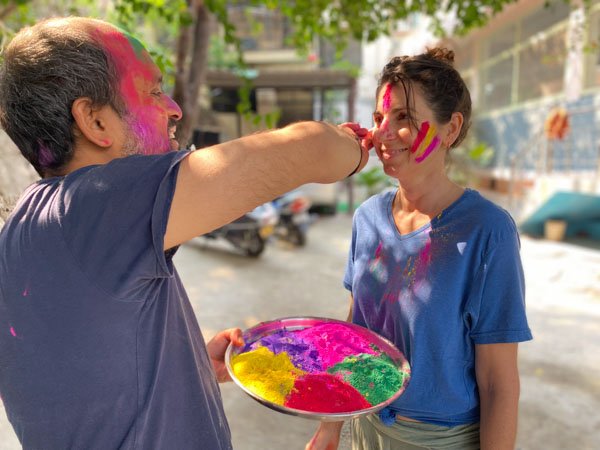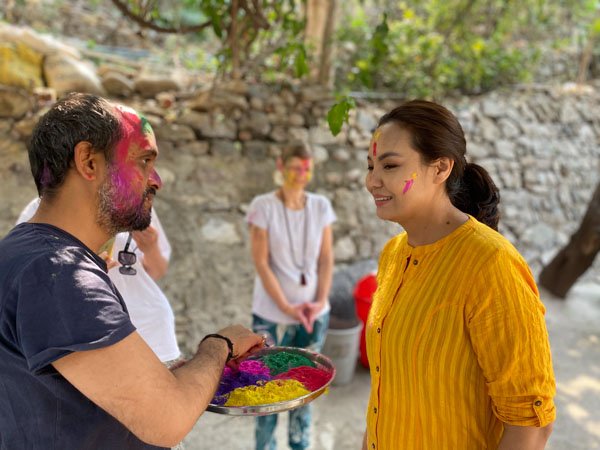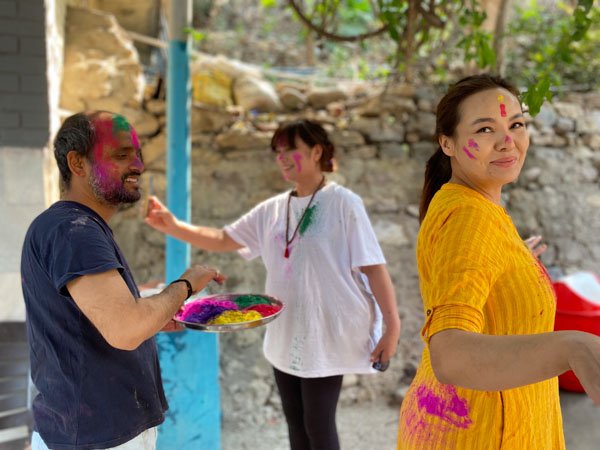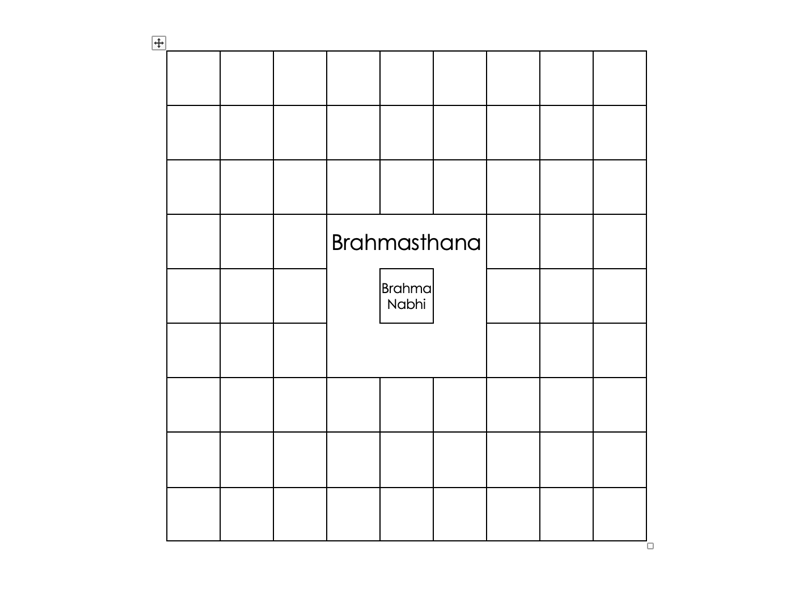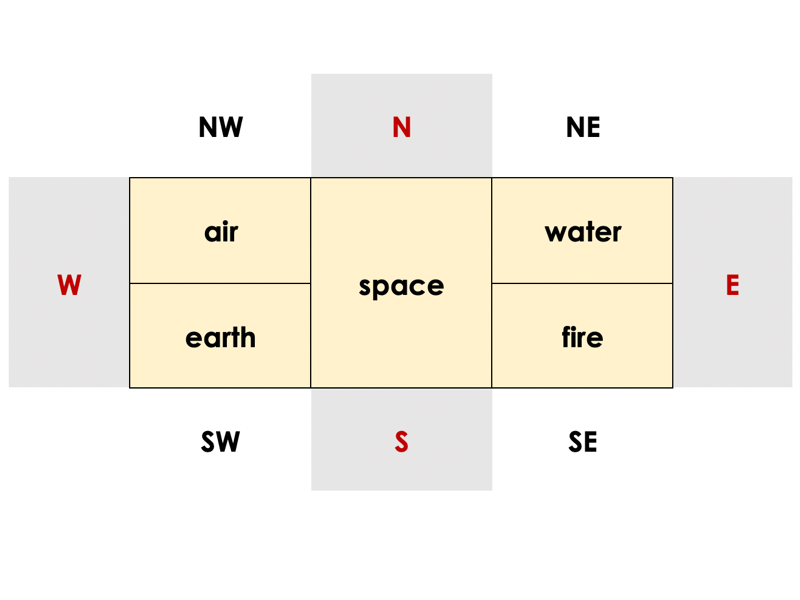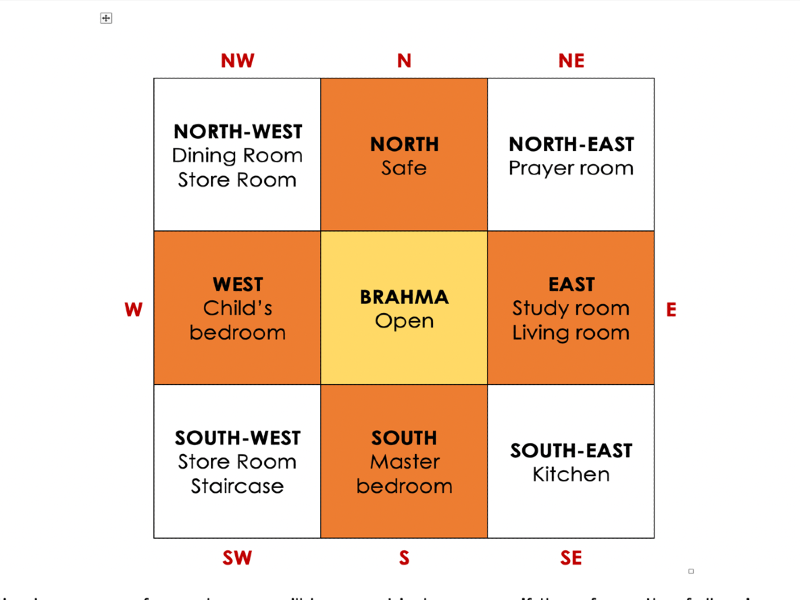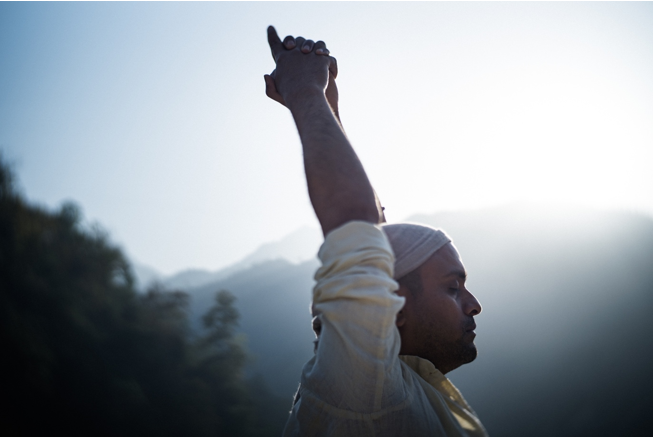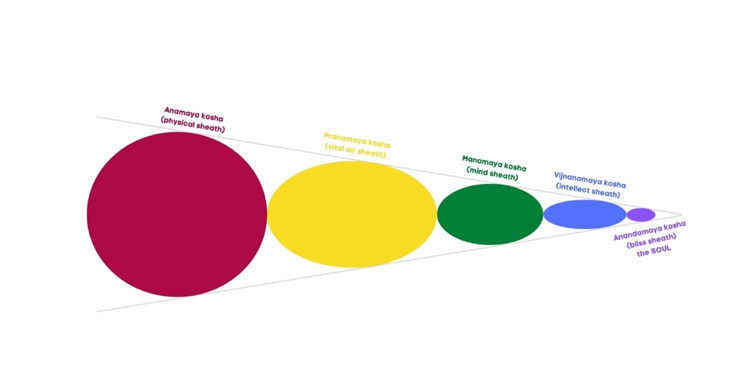In this blog we are sharing topics that we have identified over time as common sources of curiosity by those who join us in yoga courses, training programs, retreats and ayurvedic treatments.
YOGA COURSES
Q: What kind of yoga courses in Rishikesh does the Vedic Yoga Centre offer?
A: Many people think that we offer only teacher training courses, but at our Centre we have a range of programs to suit everyone which include both yoga and Ayurveda:
• Beginner yoga course
• Yoga retreats
• 200 hour Yoga Teacher Training
• 300 hour yoga Teacher Training
• 500 hour Yoga Teacher Training
• Master level program
• Kundalini kriya and meditation course
• Ayurveda de-stress program
• Ayurveda de-tox program
• Ayurveda massage and therapy course
• Group hostings
• Self-retreat
• Pilgrimages to sacred sites
We are honoured to have received Trip Advisor Excellence Awards through 2016-2018 for many of our programs; and maintaining our high standard of service continues to be a key priority at our Centre.
Follow the links in this blog for details of all our programs.
Q: What is the best yoga school in Rishikesh India?
A: The best yoga school in Rishikesh for you is the one which helps you find the path that leads you to raise your consciousness.
Rishikesh is the yoga capital of the world, so there are many yoga courses in Rishikesh which provide a variety of teachings from many different backgrounds. At the Vedic Yoga Centre we provide courses that are based on the ancient teachings of the Himalayan tradition, and have come from authentic sources which have been tested through the ages.
The programs are spiritually-oriented and combine the sister sciences of yoga and Ayurveda. We focus on providing a living atmosphere in a traditional Indian environment so that you can experience a holistic lifestyle during your stay.
We have a highly qualified senior yoga teacher with extensive experience, as well as expert Ayurvedic doctors and therapists, who all work together to help you find your healing and wellness according to your individual body nature and state of mind.
Your stay can include meals which are prepared by the family and are wholesome and offer a healthy Ayurvedic diet. All of these qualities can help those who stay with us find a holistic approach to their and wellness.
Q: What is the best meditation centre in Rishikesh?
A: There are many meditation centres in Rishikesh, so if you know what you are looking for then you need to choose between the centres offering that specific style of meditation.
At our meditation centre we offer the practice known as Vedic dhyan, which is an ancient method of experiencing your flow of awareness into the present moment. This practice has come from the Himalayan tradition which offers a deep well of Vedic wisdom that has been experienced and handed down by the ancient yogis. The practices that we share at the Centre are a systematic approach for bringing your body, breath and mind into a state of equanimity, so that you can spontaneously develop your inner awareness and learn to adjust to the process of inner awakening.
The Trip Advisor Excellence Awards that we have received through 2016-2018 include our meditation centre as well as many other features of our institution, including peaceful atmosphere, clean accommodation and yoga courses in Rishikesh, all of which contribute to providing an appropriate environment for your healing and meditation.
YOGA RETREATS
Q: What is the best Rishikesh yoga retreat?
A: The best yoga retreat in Rishikesh is the one that your body needs in this moment. What are you hoping to gain from your retreat?
Rishikesh is a unique place in the foothill of the Himalayas which has been recharged with spiritual vibrations throughout the ages. The Vedic Yoga Centre is located on the banks of the sacred river Ganga, at the foothill of the Himalayas and surrounded by nature. A Rishikesh yoga retreat at our Centre gives you tools and understanding to build up your inner life so that you can experience your overall harmony and wellness. It offers a combination of yoga and Ayurveda treatments and activities, together with an appropriate and positive healing atmosphere for those who are seeking peace, harmony and rejuvenation.
Our Vedic Ayurveda Spa & Wellness Centre provides a wide range of Ayurvedic treatments, including retreats for De-tox, De-stress and Anti-depression, or a Massage and Therapy Course if you want to study Ayurveda. You may also want to take advantage of our Ayurveda Cooking Course.
At the Vedic Yoga Centre you can choose from daily yoga classes, a Beginner yoga and meditation course, or a Kundalini kriya and meditation course. Every evening we have group chanting followed by a short lecture and discussion, with the opportunity for having any of your yoga or Ayurveda questions answered.
Our rooms are modern and comfortable, and you can enjoy Ayurvedic meals prepared by our family for your health and well-being.
If none of our programs cater for your specific needs, we can tailor a retreat just for you or your group; or you can simply come for a self-retreat and participate in any of the treatments or activities of your choice.
The Vedic Yoga Centre has been presented Excellence Awards in 2016, 2017 and 2018 for success in hosting group stays, providing Ayurveda detox therapy as well as for clean accommodation, peaceful atmosphere, and best yoga and meditation environment.
Follow the links in this blog for the details of all our different programs.
TEACHER TRAINING COURSES
Q: What is the best school for Yoga Teacher Training in Rishikesh?
A: There are many Yoga Teacher Training Centres in Rishikesh. At the Vedic Yoga Centre we take the wisdom from the traditional teachings of the Himalayas and offer these ancient methods for modern times. These teachings have been designed for use in an applied form so that students can experience their total wellness.
Our 200, 300 and 500 hour Yoga Teacher Training Courses (YTTC) all emphasise applied yogic teaching so that students can carry a glimpse of yogic experience into their life after completing the Course. Our programs are combined with teachings from the science of Ayurveda, together with its remedies and holistic lifestyle approach. Even the food offered to students during the courses is an integral part of their studies because they learn how their meals are based on the principles of balanced health through a yogic diet.
The courses are also supported by less well-known threads of yoga such as the science of swara yoga (the systematic study of breath flow through the nostrils), nada yoga (the use of sound for healing), and the addition of other instrumental sounds like the harmonium, sitar, flute and didgeridoo.
Our Centre essentially offers the teachings of:
- Karma yoga (seva – selfless service),
- Bhakti yoga (devotion to the Lord), and
- Gyana yoga (the yoga of the ultimate knowledge – wisdom).
Seva is an essential part of planting a seed in the mind of students to give selflessly, because most of us have only learned to take. Through giving, you make a space in your heart where your actions can contain higher energies and higher motives, which lead to the creation of a space for devotion.
It is the underlying motive of every act which creates a channel for the flow of energy, and that energy is based on your inner experiences. The depth of these experiences will determine how much bhakti (love) will arise within you, and this governs how much you will be able to surrender to the Higher Power within you. It is this surrender that makes you aware of the ultimate state of the essential knowledge – gyana.
Our teachings, which focus on karma, bhakti and gyana, are captured in the slogan of our Centre: “Serve, Love, Surrender”.
Q: What is the best 200 hour Yoga Teacher Training Course in Rishikesh India?
A: 200 hour Yoga Teacher Training Courses in Rishikesh India are very common nowadays, and they all offer a foundation program which is designed to give students a clear and basic concept of yoga and its gradual evolution, as well as its approach for one’s physical, mental and spiritual well-being.
At the Vedic Yoga Centre our 200 hour YTTC not only gives you tools to build up a regular yoga practice, but also gives you a solid understanding of the traditional teachings which can be applied for modern times. We want to help you not just on your mat, but also in the ups and downs of your day-to-day of life, so you can take care of your holistic health, and live all the different aspects of your life fully.
We focus on providing students with a yogic environment by maintaining the yogic disciplines that are taught as part of the Course. This has a deep physiological and psychological effects of promoting harmony, because in these times many people are suffering a great deal of tension, stress, depression and anxiety. In addition, most people lack the power of concentration because their energy is dissipated in many different directions, so they are unable to be spontaneously involved in life.
Understanding that yoga is an applied science which requires discipline and practice are key factors in our Course, along with the sacred teachings of the yogic scriptures, all of which are helpful for physical and mental health. Students are also given a very clear understanding of how yoga can offer remedies for depression and anxiety, and helps with concentration, relaxation, and above all, dissolving one’s fears.
Meditation is the cornerstone of our Course, and students not only practice how to attain this state, but learn about its healing effects, and how it gives clarity of mind so you live a balanced life. After completing their course students have an understanding and some experience of how meditation and its associated practices can transform their life. Of course, the success of this will depend upon the practitioner. If one is open-hearted, attentive, disciplined and receptive, then all of these teachings will be effective.
Learning how to share with others fearlessly is one of the most important aspects of our 200 hour Yoga Teacher Training Course. We help students to work with their weaknesses so that they can how to adjust to the different circumstances in both a teaching capacity and as a student. This journey starts with accepting yourself where you are right now, and begin taking small steps from there. Confidence which arises from the experience of their own practice is what helps our students to become better teachers.
Our 200 hour YTTC in Rishikesh will be the best yoga school for those who are looking for something deeper in their yoga practice, and at the same time seeking a genuine atmosphere which can inspire and motivate them to transform their life.
Q: What is the best 300 hour Yoga Teacher Training Course in Rishikesh India?
A: This course is especially designed for those students who are looking for an even deeper aspect of yoga to strengthen and develop a more profound understanding, experience greater skill in their ability to share with others.
We have found that many students who enrol in 200 hour Yoga Teacher Training Courses in Rishikesh are so tense during the program that rather than experiencing the teachings being offered, they are more focused on just completing the course.
At the Vedic Yoga Centre we believe that we should focus on providing an appropriate atmosphere in which students can be inspired so that they can experience the sacred teachings of yoga, all of which are based on how to raise one’s own consciousness. We do this by helping individuals carry a yogic attitude so that they can experience each session offered through an attitude of mindfulness to the moment, rather than focusing on the end result.
We believe that starting their day with prayer and meditation will help them to ground their awareness. Through this attitude they can better experience their kundalini kriyas and other yogic practices rather than just perform them with a view to passing on information about them to others. It is this type of attitude that also helps students to absorb the essential teaching of the different yogic scriptures with a view to adopting them in their own lives.
Through this focus we aim to help dissolve the inner fears of students, and strengthen their trust in themselves to build a yogic path in their life, not just perform some yoga postures every day.
During the course, along with the provision of a yogic atmosphere, a yogic diet and yogic practices, we also emphasise the need to observe silence and connect with Mother Earth. We suggest that in their spare time students undertake conscious walks in nature and visit local sacred sites which help them tune into and experience the higher energies of these places. That is why many of our students have shared in their testimonials that we are one of the best yoga schools in Rishikesh India. We have also received Excellence Awards from Trip Advisor through 2016-2018 for offering the best Yoga Teacher Training Courses in Rishikesh.
Finally, after completing the 300 Hour Yoga Teacher Training Course, we offer students an eternal relationship with the Vedic Yoga Centre, through which they can always contact a teacher who is available to assist and guide them with any difficulties they are facing in their practice or their teaching.
Q: What is the best 500 hour Yoga Teacher Training Course in Rishikesh India?
A: There are many schools offering 500 hour Yoga Teacher Training Courses in Rishikesh, but we believe that many students are unaware of how much patience and determination is required for this particular program.
The Vedic Yoga Centre’s 500 hour YTTC is a combination of our 200 and 300 hour Yoga Teacher Training programs, and is a systematic 7 week course which starts as a foundation course for your personal practice. It begins by building up your understanding in a way that helps you develop yoga in your day-to-day life, and enables you to share your basic experiences with others.
Once you have formed a habit of the different aspects of yoga in a disciplined way, the program then moves to the deeper aspects of both yogic knowledge and yogic experience. For any kind of transformation in your life, this 500 hour YTTC requires that you be willing to approach your life from a spiritual perspective, rather than focusing on being a teacher. As one who is already teaching yoga, albeit at a basic level, you will be able to share your knowledge and experience more spontaneously with others because your yoga has become a part of your everyday life.
Anyone who wants to enrol in this course should first be very clear about why they need this course; and if they do believe they need it, then they should scrutinise the curriculum and daily schedule to identify whether they are able to commit to it. If you are unsure then it may be wiser to start with the 200 hour Yoga Teacher Training program; and only after completing the foundation course and gaining some experience, should you consider whether you are prepared to return for the 300 hour program.
Regardless of which program you choose, you will find that our Centre focuses on providing a traditional yogic atmosphere which helps you to develop your physical, mental and spiritual health. We aim to give you the best of traditional Vedic yoga in a dedicated yoga ashram-style setting, with modern facilities.
Nowadays it is not easy to find authentic and genuine yogic experiences, but in addition to the appropriate atmosphere, we provide a routine, the sacred teachings from the different scriptures, together with the practices of hatha yoga, raja yoga, mantra yoga, nada yoga, swara yoga, vedic dhyan, Himalayan kundalini kriya yoga, karma yoga, bhakti yoga and gyana yoga. All of these aspects are integrated so that you experience the holistic nature of the different branches as one path. The entire course is focused on the teachings of the Himalayan tradition.
Yoga at our Centre is different to many other places due to our proximity to the sacred Himalayas and the holy river Ganga. We are situated close to sites which contains the lingering presence of all past Masters, gurus, yogis, seekers and siddhas who have built up the spiritual energies in this area through their austerities over the ages, and handed us their teachings through both verbal and non-verbal exchanges.
To make the most of this course, students need to understand that the manifestation of their outer life is based on their inner life. If you are miserable within, then your surrounding life will also be miserable. So our Centre focuses its teachings on providing the positive atmosphere which encourages students to go within and develop their higher awareness.
ASHRAM-STYLE LIVING
Q: Are there any yoga ashrams in Rishikesh?
A: There are many yoga ashrams in Rishikesh. An ashram is defined as a place where people withdraw from society to live apart as a community or a group, and work together towards their common spiritual evolution. It is often used in a religious sense, but at the Vedic Yoga Centre in Rishikesh we offer an ancient ashram-style atmosphere for students without any pressure for people to conform to any set belief system. This dedicated atmosphere, together with modern facilities, can help people heal and create the feeling of a yogic community. It is not a religious affiliation, but one that sees the one-ness of all living beings who are working towards raising their consciousness and working with each other to create a kinder and more compassionate world.
In current times, many people are caught up with seemingly endless restlessness and thoughts, and are affected with stress and depression which they don’t know how to release. Not only do we need a combination of yogic techniques and natural Ayurvedic medicines for our healing, we also need an appropriate living atmosphere which contains all those types of energies and attitudes which helps to bring holistic health and harmony through the living atmosphere.
The Vedic Yoga Retreat Centre is the best Rishikesh yoga ashram to provide this healing environment because it provides both the routine for peaceful living and the ancient teachings of the Vedas for modern times. This is done through a combination of yoga techniques and Ayurveda treatments, while giving participants the space they need to create the peace they require for healing themselves. Our schedules are designed in a way that students can find balance between the program and their own time; and they are provided with a private room that has its own bathroom facilities. We also provide three healthy meals per day based on Ayurvedic science which are specifically designed to complement the healing process.
Against this background of ashram-style living we provide a routine of yogic discipline. It is this discipline which helps visitors work towards raising their awareness from their survival instincts (which hold them at their animal nature) to experiencing their higher states of consciousness. This is the path towards feeling truly human, and it is the foundation of experiencing our divine nature.
The Vedic Yoga Centre is situated below the sacred Marniputh Hills of the Himalayas and beside the holy river Ganga. The energy from these holy places provides the appropriate atmosphere to inspire and motivate visitors to continue working on themselves through a range of yogic disciplines.
Our aim at the Vedic Yoga Centre in Rishikesh is to provide a practical approach to healing; and anyone who tries our program sincerely and consistently will know the effects of the teachings, which are based on the foundation of ashram style living. They can definitely transform your life.
SPIRITUALITY
Q: Where can I find a spiritual master in Rishikesh India?
A: There have been a long line of Himalayan Masters from the Rishikesh area – some have been well-known while others have not. However, all of these Masters have handed down their wisdom and experience from generation to generation, and contributed to the world by being living examples of how to walk on the path of spirituality. Their desire to share with others continues to let us walk in their footsteps today; and it is the duty of all present yoga practitioners to also continue passing on that knowledge and make it their living experience by transmitting their wisdom to others.
Rishikesh has always contained the specific energy of these spiritual practitioners, and has been continually recharged over time by these vibrations, together with the presence of sacred Mother Ganga. She has been a witness of this entire tradition and lineage throughout the ages. But your personal experience of that energy will be in accordance with the way that you approach your stay here. If you are open to this energy then you will definitely see a shift in your mind. Simply living here with a receptive attitude has the power to change your thought patterns.
Our Senior teacher, Shailendra Singh Negi, whose family has lived in the Rishikesh area for many generations, was born and studied here. He has been raised by his parents in the Himalayan tradition and has been inspired from an early age by many spiritual masters who have transmitted their teachings to him. He has dedicated his life to sharing whatever he has received with those who are receptive; but importantly, he never asks people to believe anything he offers – he simply asks them to be attentive to each moment and to implement his teachings from wherever they are right now in their lives. Through this approach, students will have their own spiritual experiences which will guide them further on the path; and it is from these genuine experiences that one’s faith and trust in their spiritual path arises.
The spiritual path is for everyone – on this journey no-one is inferior or superior; it does not discriminate between caste, race, colour, nationality or gender. These titles are all needed only at the level of the body and the ego, but spirituality is the experience of inner consciousness, which is something to which every human being is entitled; and once you experience this through your dedicated practice, it is what unites you with all others of the world.
Many people come to Rishikesh to seek a spiritual Master; but you will only find a genuine one when you are ready. It is not determined by your wish to have a Master, but by your intense desire to raise your inner consciousness; and the role of the outer Master is to connect you to this Master within you. A true master will never make you handicapped – he will empower you to have trust in your own spiritual journey, making you aware that if he can walk this path, as the long line of ancestors has walked it before, so can you. He is a living example for your own spiritual life.
If you are unable to find a spiritual Master, you can just become aware of whatever you have already received from any of your learning experiences, and ask yourself whether you are using it appropriately to prepare yourself so that you can be ready for your further spiritual journey. Your dedication will help you find the appropriate Master.
In the past, the energy of spiritual Masters remained in the places where they lived or travelled; and because so many Masters and yogis lived in the Rishikesh locality there are many sites in this area which are still charged by that energy and vibration. The Vedic Yoga Centre is a spiritual centre situated amongst these different sites, still surrounded by Nature and the sacred river Ganga; and because of the continued devotion that is practiced here at the Centre by the Negi family, as well as the many students who regularly revisit the Centre, it carries the type of energy which is helpful for those who are genuine seekers on the spiritual path.
Come to the Vedic Yoga Centre in Rishikesh and learn to find your inner spiritual Master.





